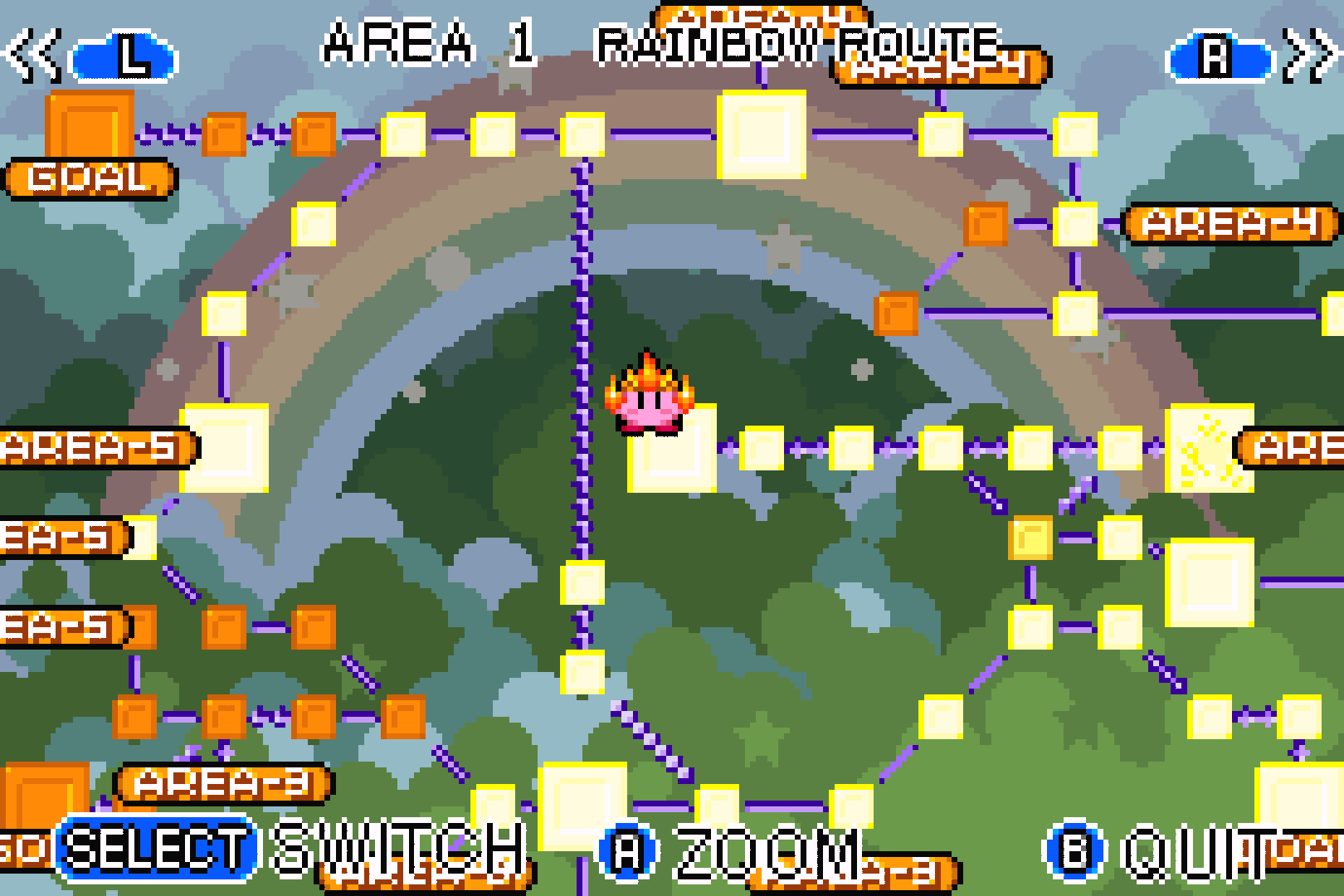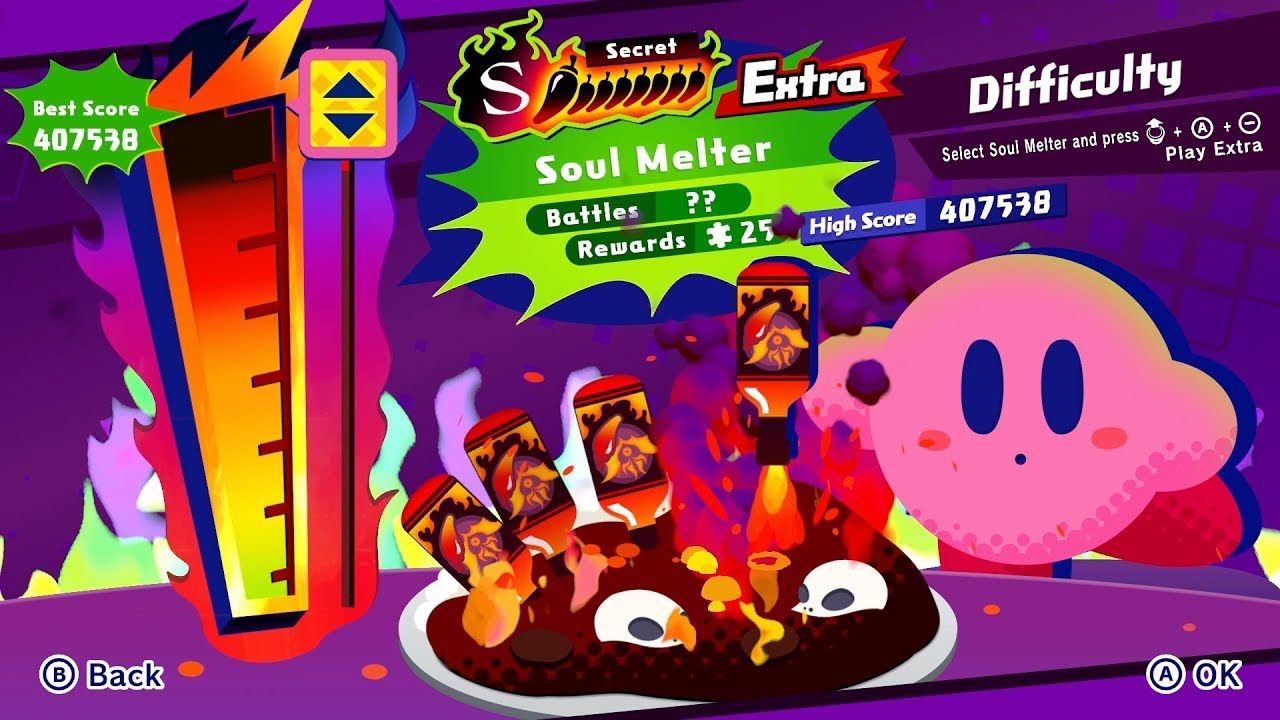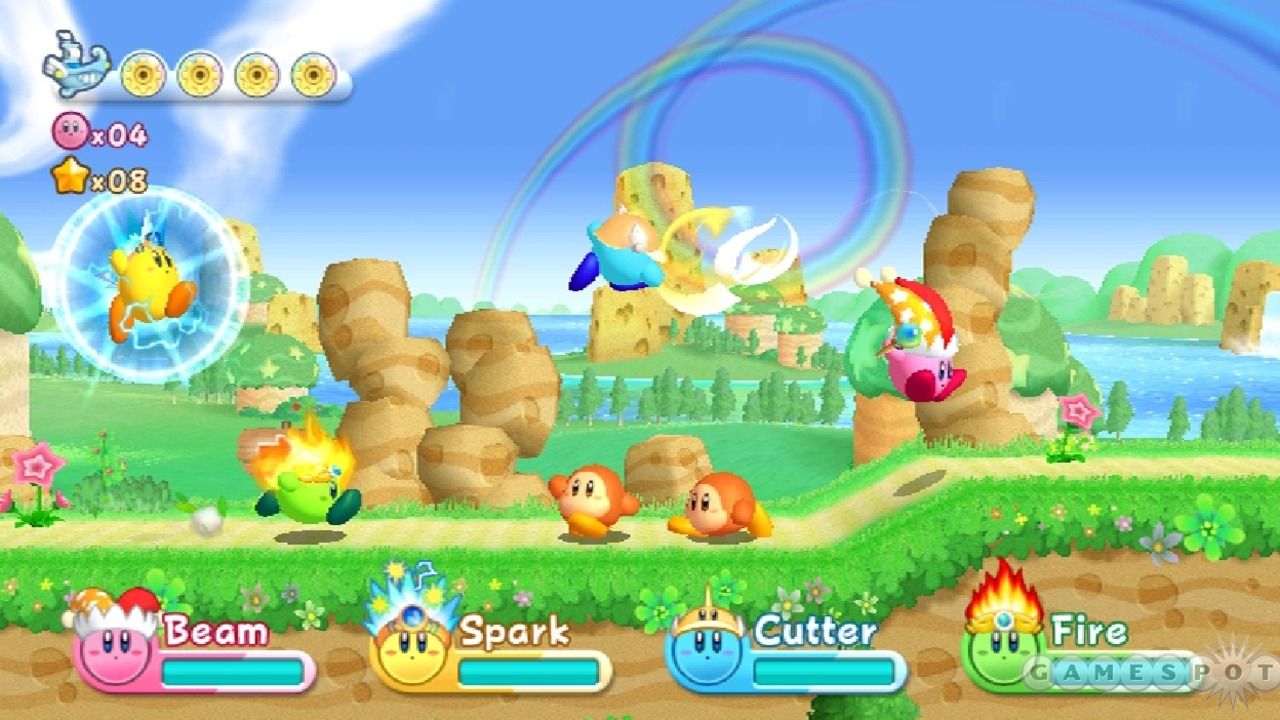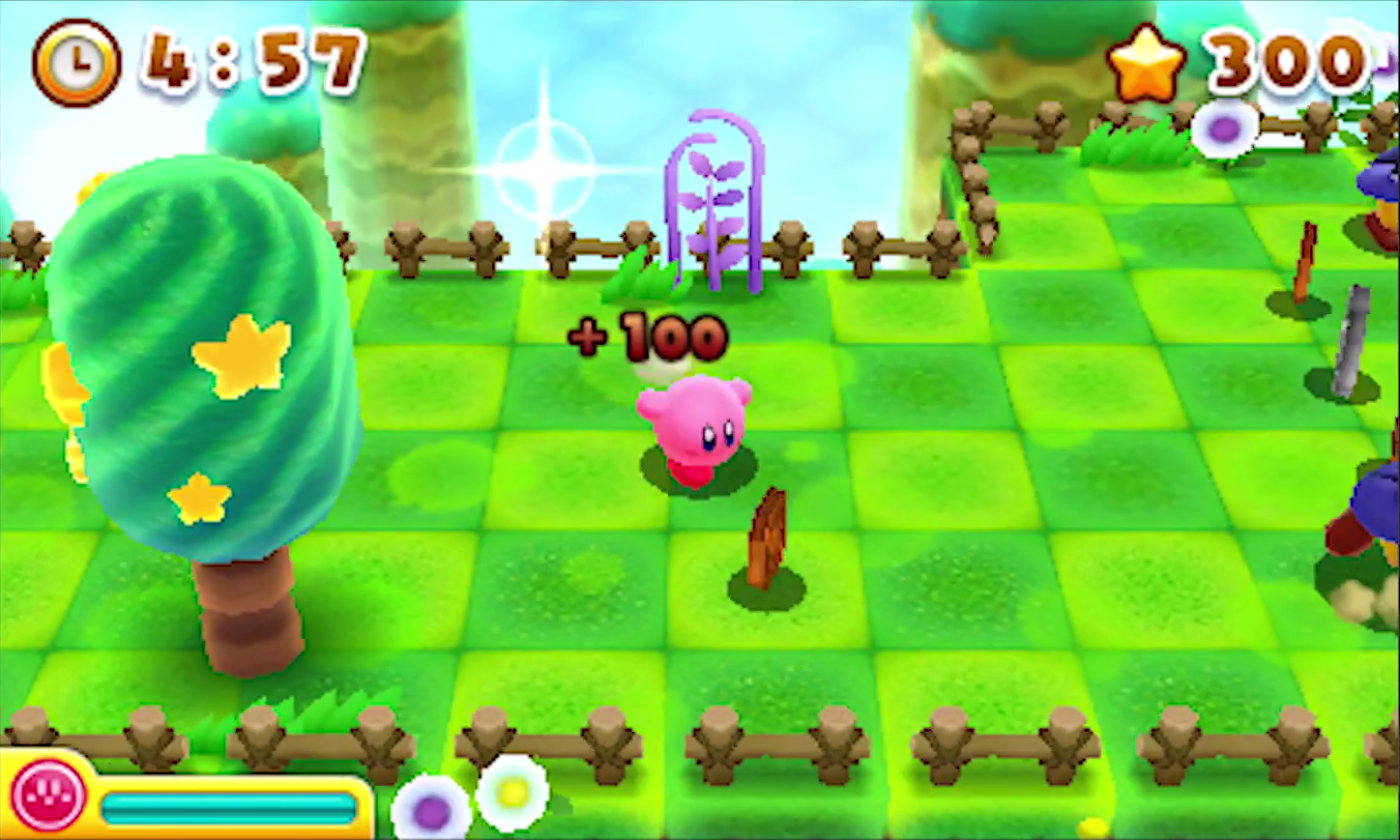What Is Holding Back the Kirby Franchise?
Kirby's newest adventure does nothing to improve or innovate on the same old formula

As I'm playing through Kirby and the Forgotten Land, I can't help but feel like I'm playing another pedestrian title in the Kirby series. Yes, despite evolving the series into 3D for the first time, Forgotten Land does not play like a forgotten title. Rather, it plays like every other I've played before it.
If I'm being quite frank, we've been playing Kirby's Adventure (1992) for the past 30 years. The NES title was the first to put Kirby on home consoles as well as give him the Copy ability. While I feel Super Star had a jump due to the new power-ups and game modes, it was perhaps the only real exception to the formula. It wasn't until 2011's Return to Dream Land that the series began to more closely adapt the Super Star formula complete with larger movesets and added modes like The Arena.

Outside of that, we've had various slight deviations from the straightforward Kirby lineage. Titles like Amazing Mirror added 4-player co-op and Metroidvania-like exploration. Canvas Curse gave us touch screen controls. Neither of these games was perfect by any means, yet they dared to do something different. This came without either making the game far too simplistic (Kirby Epic Yarn on Wii) or repetitive and less enjoyable (Kirby Mass Attack for DS). Yes, despite Epic Yarn changing the formula a little, it will forever be remembered mostly for its adorable visuals. You can also add that argument to Kirby's Dream Land 3 on SNES, an otherwise unremarkable title in the series with a gorgeous visual aesthetic.
Corners of the internet love to throw around the title "rehash." Yet despite reserving them for innovative series like Mario and Zelda, I feel it's best used for the Kirby series. Why has a single Kirby title never ranked past an 86 on Metacritic? Moreover, this isn't the first time that the series has started to become stale. Let's not forget Kirby Squeak Squad on the DS which abandoned Amazing Mirror's non-linear progression for another basic platformer in the series.
Even though titles like Smash Bros. feature Kirby alongside legends like Mario, Link, and Donkey Kong, there's a clear hierarchy in quality between some of the greatest games ever made and the enjoyable 2D platformers that never quite seem to evolve. As such, I've begun to wonder about something over the course of my Forgotten Land playthrough: What is it that causes the beloved Kirby series to rank as a B-Level Nintendo franchise, at best?

Consider Metroid for instance. While the series originated on the NES in 1986, Samus got her biggest break from 1994's Super Metroid. Hailed as one of the greatest games ever made, the title would enter a mysterious 8-year hiatus until the release of the 3D Metroid Prime and the GBA's 2D sequel, Metroid Fusion. Both titles would go on to receive critical acclaim.
However, until the release of Metroid Dread, the series never quite found a massive following like Nintendo's biggest series. As such, its lack of sales was undoubtedly a contributing factor to the series' multiple hiatuses. Nintendo would continuously shelve the Metroid series in favor of other IPs treating it as a lost cause that appealed to a small audience. Yet the 2021 release of Metroid Dread not only created the best-selling Metroid game in history but, as with its predecessors, one of the best games Nintendo has ever released. All it took was quality development and an incredible marketing push by the publisher.
With Kirby, we've gotten several games per generation and, until the Switch, titles appear on both home consoles and handhelds. Yet you'll never see people saying Kirby is one of the best games ever. Sure, you can argue it's your favorite or that Planet Robobot is one of the best games in the series. But what did it do differently from its predecessors? Honestly, it's more of a preferred choice among its predecessors which all boast similar levels of quality. None of them really evolve the formula so much as just do things differently.
I usually hate using "rehash" to define a game. However, sequels to Mario and Zelda titles usually come with various innovations and challenges to keep the games fresh and alive. With Kirby, it's more like taking a lateral step to development instead of an upgrade. Now you can fuse copy abilities. Now you can evolve them. Okay, but this doesn't really impact me with any fundamental upgrade that you might get from playing the Mario Kart series. For instance, look at the transition from F-Zero to F-Zero X to F-Zero GX. If you've played all three, you see for yourself how many ways the series has evolved over the course of 12 years.

Part of me believes it's the lack of challenge in Kirby games that holds it back. As I worded earlier, "pedestrian" describes Kirby's challenges best. You don't get any real challenge until you enter the Arena and the True Arena that follows in the more recent titles. Yes, these are challenging for even hardened veteran players. But we aren't engaged until then.
But what do Kirby games do to evolve their formula and continue to innovate? Kirby Super Star's multiple game modes had different gimmicks like Meta-Knight's Revenge countdown or switching powerups on the fly in Milky Way Wishes. Super Star Ultra took it a step further with Revenge of the King's challenge and Meta-Knightmare Ultra's ability to play as the masked crusader.
But ultimately, I feel the quality of Kirby games largely comes on a lateral line and not a hierarchy. If you play Mario, the usual suspects among the top will be SMB3, World, 64, Galaxy, Galaxy 2, and 3D World. If you play Zelda, the top favorites are usually listed as A Link to the Past, Ocarina of Time, Majora's Mask, The Wind Waker, Twilight Princess, A Link Between Worlds, and Breath of the Wild. You know what the most popular games are if you observe the fanbase.
For Kirby, the perennial favorite has always been Super Star and its remake, Super Star Ultra. No Kirby game has really made differences in a formula that has played a little too safe. Even then, you could still argue Kirby's Adventure, and its remake, Nightmare in Dream Land, continue to set the standard for the Kirby series. If your favorite is another game, chances are it isn't because it's significantly better than the aforementioned titles. Rather, it just did the formula in your favorite way.

What does HAL Laboratories need to do in order to take the next step in Kirby's evolution? When you look at all of Nintendo's series, why doesn't Kirby measure up as high as the perennial 9/10 and 10/10 favorites like Mario and Zelda? Not to mention it will likely never outsell the immensely popular titles like Animal Crossing and Pokemon. The reason I bring this up with doubt isn't to bash the series but because I care greatly about it. I'm a longtime fan of Kirby and I feel Forgotten Land is not just full of wasted potential, but is also the sign that the series is stalling out once again. HAL Laboratories can do so much better with the franchise.
If you follow Nintendo games, and you're playing Forgotten Land, it's probablynot a mind blowing experience. Kirby's latest is less comparable to Metroid Dread or Breath of the Wild and more like New Super Mario Bros. U. In addition to being woefully stale and easy, the game also feels relatively unpolished. If Super Mario 3D World, Breath of the Wild, Metroid Dread, Mario Kart 8 Deluxe, and even Ori and the Will of the Wisps can run in 60 FPS, I don't get why Kirby can't cut it. My gripe isn't 30 FPS as much as it is the inability to even run that consistently.
What in the name of Pokemon Legends Arceus is this? #KirbyandtheForgottenLand #Kirby #NintendoSwitch pic.twitter.com/hlbiFGTqdk
— Rango (@RangoTheMercSSB) May 19, 2022
That said, the aforementioned titles in each series I mentioned were the essentials across 30 years. For Kirby, your essentials will be Adventure, Super Star, and Return to Dream Land, the former two of which are accessible on Nintendo Switch Online. If you want to play their remakes on GBA and DS, respectively, go right ahead. I honestly recommend them, especially considering Kirby's Adventure is my favorite NES game right behind Super Mario Bros. 3.
I think it's safe to say that the luster that came from rejuvenating the series with Return to Dream Land has worn off. At first, the Wii title was the closest effort to Super Star coming hot on the tail of the latter's DS remake by the same director: Shinya Kumazaki. The new engine, 4-player mode, and the complete roundup of movesets for the abilities made it one of the best - if not the best - Kirby game. The 3DS games - Triple Deluxe and Planet Robobot - followed suit with the same engine, mechanics, and extras like True Arena, as well as adding the "gimmick" power-up (Ultra Copy Ability -> Hypernova -> Robobot Armor).
When Star Allies came out, we got a 30 FPS entry that felt shorter and somehow even easier than its predecessors. It was nice of HAL Laboratories to include free DLC and add modes and levels to the game but the initial release was just too little to ask for. Yet with Forgotten Land, it feels like they took the 3D control style from Kirby 3D Rumble and just designed the game like the rest of the recent Kirby titles.

Forgotten Land is alright, but in the end, I feel like HAL needs to get a bit more creative with their formula if they want to stand alongside the quality of Nintendo's finest series. With that said, Forgotten Land is perhaps the stalest title in the series since Kirby's Squeak Squad for DS. If you want a series to thrive and succeed, you cannot continue to develop inoffensive and conservative titles. Sometimes you have to be daring, break the mold, and continue to innovate.